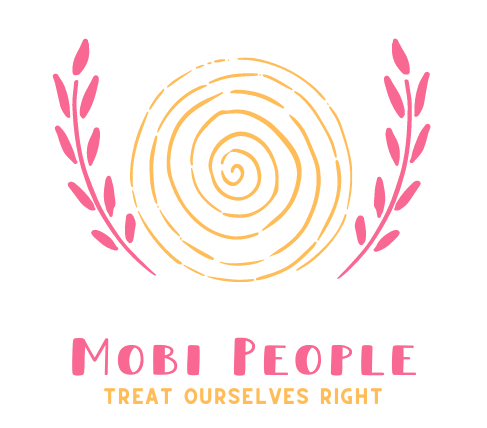Holistic medicine and alternative medicine are terms often used interchangeably, yet they represent distinct approaches to health and wellness. Holistic medicine focuses on treating the whole person—mind, body, and spirit—while alternative medicine encompasses a wide range of practices that may or may not include holistic elements. Understanding these differences can empower individuals to make informed decisions about their health care.
Holistic medicine emphasizes the interconnectedness of various aspects of an individual’s life and promotes therapies that align with their overall well-being. This can include a combination of conventional medical treatments alongside practices like acupuncture, herbal medicine, and mindfulness. In contrast, alternative medicine might prioritize specific non-conventional treatments that are used instead of mainstream medical options.
Navigating these two approaches can be crucial for individuals seeking comprehensive health solutions. Engaging with both holistic and alternative practices allows for a broader understanding of health, fostering a more personalized and effective path to wellness.
Defining Holistic and Alternative Medicine
Holistic and alternative medicine represent distinct yet intertwined approaches to health and wellness. Holistic medicine emphasizes the whole person—mind, body, and spirit—while alternative medicine encompasses a range of practices outside conventional medicine.
What Is Holistic Medicine
Holistic medicine focuses on treating the individual rather than just the disease. This approach integrates physical, emotional, and spiritual well-being. Practitioners of holistic medicine often utilize therapies such as acupuncture, herbal medicine, and nutritional counseling.
Key principles of holistic medicine include:
- Patient-Centered Care: Emphasizes the individual’s unique needs.
- Prevention: Encourages lifestyle changes for long-term health.
- Mind-Body Connection: Acknowledges the impact of mental health on physical wellness.
Holistic practitioners seek to promote balance and harmony within the entire system of a person.
What Is Alternative Medicine
Alternative medicine encompasses various practices used instead of standard medical treatment. This category includes therapies such as chiropractic care, homeopathy, and naturopathy. Alternative treatments often aim to complement or enhance conventional medicine.
Common characteristics of alternative medicine include:
- Natural Approaches: Utilizes non-synthetic methods.
- Diverse Modalities: Offers a wide range of treatments.
- Personalized Care: Focuses on tailored treatments for individuals.
Patients may turn to alternative medicine for more individualized care or a desire to avoid pharmaceuticals.
Overview of Key Concepts
Both holistic and alternative medicine intersect within the realm of integrative medicine, which combines standard medical practices with complementary therapies. Important concepts include:
- Complementary and Alternative Medicine (CAM): This term encompasses both categories and illustrates their usage alongside conventional treatment.
- Mind-Body Therapies: Techniques that harness the connection between mental states and physical health, such as meditation and yoga.
- Natural Medicine: Refers to the use of natural substances for treatment, an integral aspect of both holistic and alternative approaches.
These frameworks emphasize a comprehensive view of health, aiming for both symptom relief and overall wellness.
Comparing Holistic and Alternative Medicine
Holistic and alternative medicine both focus on wellness and health care practices. They involve different philosophies, treatment approaches, and levels of integration with conventional medical treatments. Understanding these distinctions can aid in making informed choices about health care.
Philosophies and Core Principles
Holistic medicine views health as a balance of physical, emotional, social, and spiritual factors. Practitioners consider the whole person rather than isolating symptoms. This approach emphasizes self-care, lifestyle changes, and wellness, which encourages patients to take an active role in their health.
Alternative medicine encompasses a variety of practices outside conventional medicine. It includes therapies like acupuncture, homeopathy, and herbal medicine. Practitioners may prioritize natural treatments and often address specific conditions rather than overall wellness, leading to different healing methodologies that may lack extensive scientific evidence.
Differences in Treatment Approaches
A holistic practitioner may employ multiple therapies to address a patient’s overall well-being. This could include nutrition, stress management, or physical therapy. Treatments often aim to promote long-term health rather than just treating symptoms.
In contrast, alternative medicine can involve specific therapies targeting individual ailments. For example, someone using alternative methods might choose massage therapy for pain relief or herbal remedies to treat a cold. Each approach emphasizes practitioner-patient communication, but the focus and methodologies differ significantly.
Integration With Conventional Treatment
Holistic medicine often seeks to complement conventional treatment, promoting a collaborative relationship between patients and both holistic and medical doctors. This means a patient might receive conventional drugs along with holistic therapies like mindfulness or nutritional counseling to address the broad spectrum of health.
Alternative medicine can sometimes operate independently of conventional treatments. While some practitioners advocate for combining both approaches, others may discourage the use of traditional medicine. This reliance on alternative therapies may lead to potential risks if patients delay conventional care, especially in serious health situations.
Role of Practitioners
Holistic practitioners often include a range of professionals, like holistic doctors, nutritionists, and therapists. They typically employ a holistic framework that encourages client involvement in the healing process. Collaboration among various practitioners can help address different health aspects simultaneously.
In contrast, alternative medicine practitioners can range from certified therapists in specific modalities to individuals without formal medical training. Depending on the treatment, the level of training and expertise varies, which can impact the efficacy and safety of alternative therapies. Choosing a qualified practitioner is crucial for ensuring appropriate care.
Examples of Holistic and Alternative Therapies
Various therapies exist within the realms of holistic and alternative medicine. These approaches often focus on treating the whole person rather than just specific symptoms. The following subcategories provide insights into different practices that embody these principles.
Mind-Body Practices
Mind-body practices emphasize the connection between mental and physical health. They include techniques such as meditation, which promotes relaxation and stress reduction. Yoga integrates physical postures and breathing exercises to enhance mental clarity and physical strength.
Tai chi is another practice that combines movement and breathing for improved balance and mental focus. Biofeedback allows individuals to gain awareness of physiological functions, enabling them to change responses to stressors. All these practices encourage self-awareness and personal empowerment, fostering comprehensive health.
Natural and Herbal Remedies
Natural and herbal remedies utilize plant-based substances to promote wellness. Herbal medicine encompasses a range of preparations made from plants, addressing various conditions. Common herbs include echinacea for immune support and ginger for digestive health.
Naturopathy focuses on natural healing, employing dietary changes, hydrotherapy, and lifestyle adjustments alongside herbal treatments. Homeopathy offers remedies based on the principle of treating “like with like,” using highly diluted substances. These modalities emphasize the body’s ability to heal itself, utilizing nature’s resources effectively.
Manipulative and Body-Based Practices
Manipulative and body-based practices target physical alignment and overall well-being. Chiropractic care focuses on diagnosing and treating musculoskeletal issues, particularly those related to the spine.
Massage therapy is widely recognized for its relaxing effects and its ability to alleviate tension. Techniques vary from deep tissue to aromatherapy massage. Reflexology involves applying pressure to specific reflex points on the feet or hands, believed to correspond with various body parts.
Additional methods include cupping and moxibustion, which are rooted in traditional Chinese medicine, aiming to improve circulation and energy flow.
Whole Medical Systems
Whole medical systems refer to complete frameworks of theories and practices. Ayurveda is one such system that integrates lifestyle, diet, and herbal treatments based on individual constitution, or “dosha.” It emphasizes maintaining balance in body, mind, and spirit.
Traditional Chinese Medicine (TCM) is another extensive system, incorporating acupuncture, herbal medicine, and dietary therapies to restore harmony. Both systems provide a holistic approach to health management, focusing on prevention and wellness. Such frameworks not only offer remedies for illness but also holistic guidance on living a balanced life.
Benefits, Challenges, and Considerations
The discussion on holistic and alternative medicine includes various factors like health outcomes, safety, regulation, and financial implications. These elements play a crucial role in determining how individuals utilize these approaches to enhance their well-being.
Health Outcomes and Wellness
Holistic and alternative medicine often emphasize achieving optimal health and overall wellness. Practitioners may incorporate lifestyle changes, special diets, and natural therapies aimed at improving patient health. Techniques such as traditional Chinese medicine and practices like qi gong focus on balancing the body’s energy to promote healing.
However, the efficacy of these treatments can vary significantly. Some individuals report improvements in their symptoms, while scientific evidence remains mixed regarding their effectiveness. Patients must evaluate their options based on their unique health needs.
Safety and Efficacy
Safety is a significant concern in holistic and alternative medicine. While many therapies use natural substances, potential side effects or interactions with conventional medications can occur. Practitioners should thoroughly assess a patient’s medical history before recommending treatments.
Efficacy often hinges on individual responses to treatments. Some therapies may improve health for specific conditions, yet lack rigorous scientific evidence for widespread use. Prospective users are encouraged to consult healthcare professionals before starting any alternative or holistic regimen, ensuring a well-rounded understanding of safety.
Regulation and Accessibility
Regulatory frameworks for holistic and alternative medicine vary widely across regions. Many practices often lack stringent governmental oversight, leading to a lack of regulation in some areas. This absence can result in variability in practitioner qualifications and treatment standards.
Accessibility also poses challenges. While some individuals may have ample access to holistic practitioners, others might face barriers due to location or availability. Understanding local regulations and the accreditation of practitioners can help patients make informed choices.
Cost and Insurance Coverage
The financial aspect of holistic and alternative medicine is critical for consideration. Costs can vary, often depending on the treatment type and practitioner fees. Many holistic therapies are considered out-of-pocket expenses since they may not be covered by standard insurance plans.
Patients should investigate whether their insurance provides any coverage for complementary and alternative medicine (CAM) treatments. Understanding the financial implications can help individuals make informed decisions regarding their healthcare options, ensuring that they can pursue the desired therapies without incurring excessive costs.


